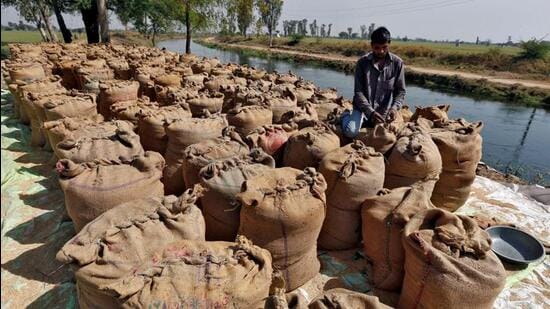Why India restricted export of rice amid global food crisis
The quantities of rice stocks held by the federal government purchased by ethanol manufacturing distilleries have increased sharply this year – around 920% – as supplies of basic or damaged basic grain, one of the considerations that have led India to curb exports, people familiar with the subject. On June 5, 2021, Prime Minister Narendra Modi announced the advancement of the target year for 20% of ethanol mixture from five years to 2025, a national target of high priority. The mixture program aims to reduce India’s dependence on costly oil imports.
Broken or partially damaged rice is the paddy dehused by the mills. It is a key source of poultry supply as well as a raw material from which ethanol is made. The country will need 11 billion liters of ethanol to achieve the target of 20% target, according to official projections. Since this objective cannot be achieved by melasses alone, which is a sub-product of sugar, the country has allowed the use of cereals for the manufacture of ethanol, which is mixed with gasoline, in 2018-2019.
In 2020-2010, the government authorized the Food Corporation of India (FCI), the main food group in the center, to sell specific quantities to the cereal-based ethanol distilleries. During the so-called Ethanol supply 2021-2222, FCI allocated 1.3 million tonnes of rice for this purpose. As a result, the distilleries raised 505,935 tonnes until August 28, 2022, against 49,000 tonnes the previous year, according to data from the Ministry of Food.
While a global food crisis sets in and wheat became rare due to the Ukraine war, the export of broken rice has skyrocketed, raising prices. “Countries desperate for food began to import broken India rice,” said Apuihul Singh, the owner of Santoshi Impex, a food business. In April-August 2022, the export of broken rice was 2.1 million tonnes, against 1.5 million tonnes during the corresponding period of the previous year. Compared to a basic period in April-August 2019, this represents a leap of 4178%, showed the data.
Broken rice importers included Djibouti, a country in the horn of Africa, Indonesia, Senegal and even China, according to data from the Ministry of Food. “FCI rice was cheaper than broken rice and that is why, this year, FCI rice was bought in larger quantities by distilleries,” said Abinash Verma, promoter of Eastern Indian Biofuels Private Ltd, a distiller . The FCI rice cost distilleries of around 20 ₹ per kg, while broken rice, although unfit for human consumption, was sold at 21-22 ₹. It costs around 41 ₹ per kg to obtain, transport and store rice.
Buer rice prices have also put pressure on poultry farmers, who moved to other grains such as corn. Corn prices went from 19 ₹ per kg in January of this year to around 24 ₹ per kg this month. Verma said India was little likely to have a real shortage of rice. Government borders on exports, including 20%export rights, are more as a preventive move while traders have started to increase prices to the anticipation of a lower harvest due to a Uneven monsoon this year, he said.



